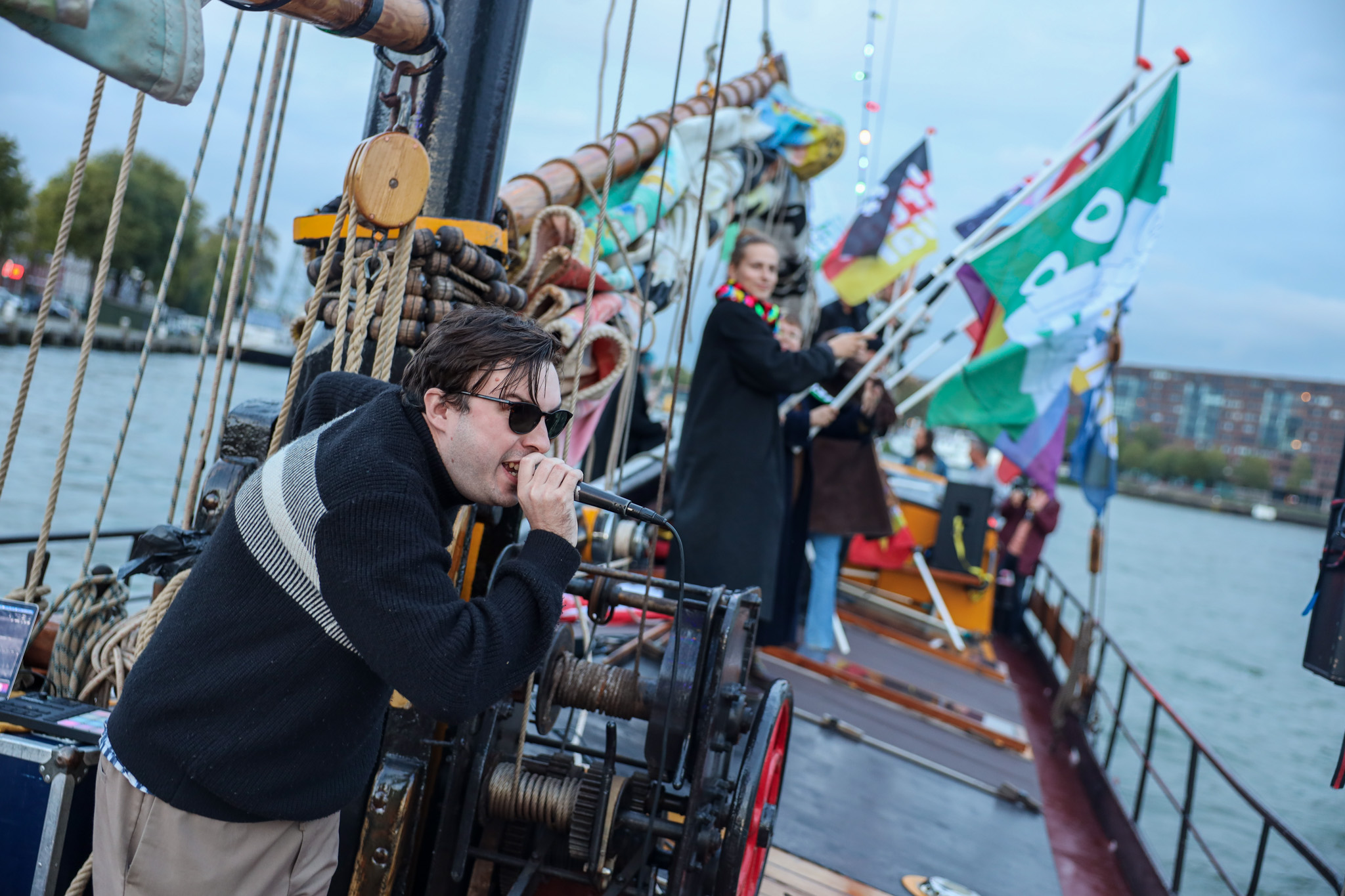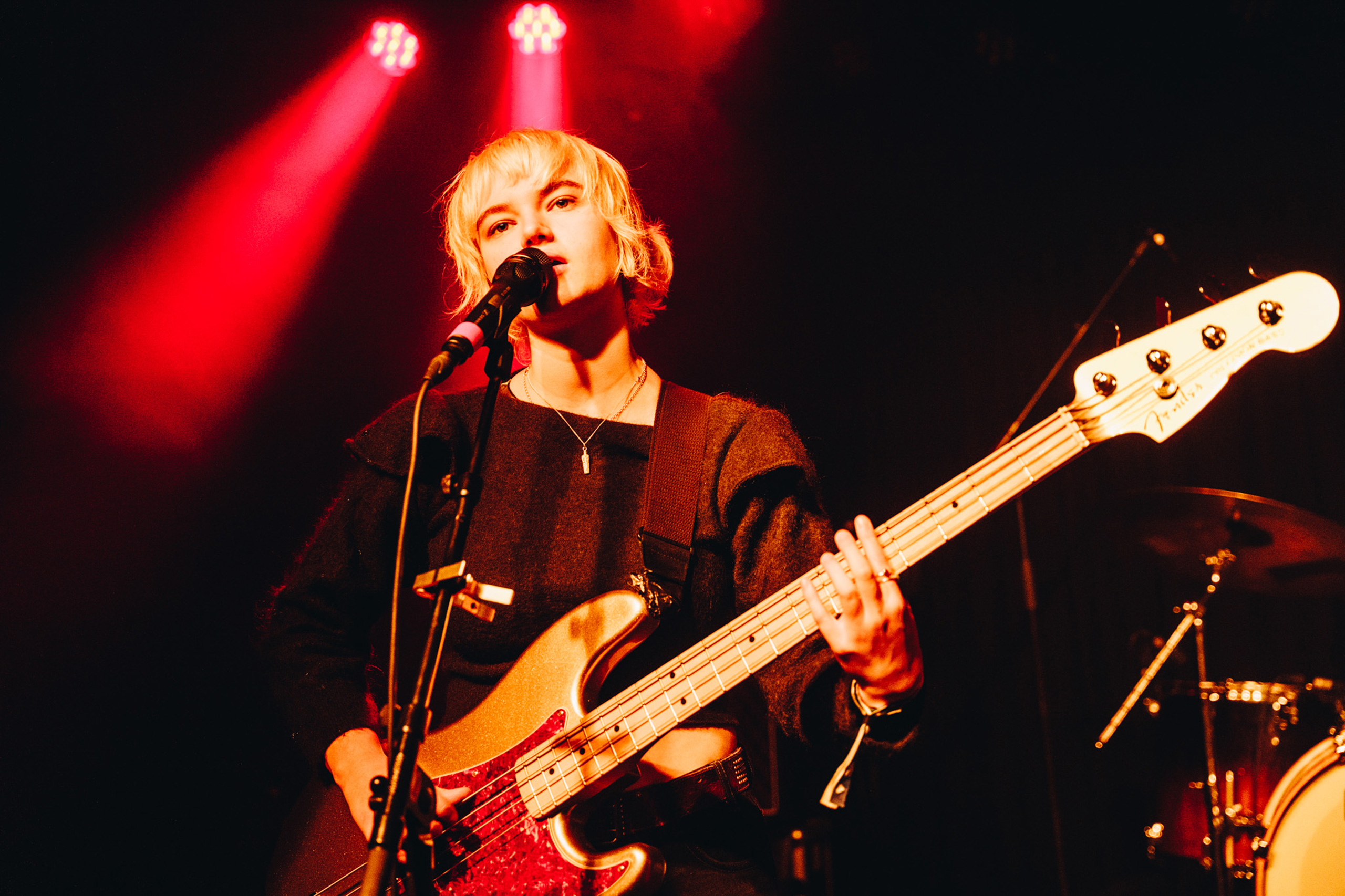Left Of The Dial festival: Personal touches make the Rotterdam new music festival feel like one of Europe’s best
A weekend bopping (and sailing) around Rotterdam's festival of indie discovery

Architecturally, Rotterdam is unlike most places. Largely rebuilt after the Second World War it favoured a pick-n’-mix approach to new civic buildings and, as such, modernist towers geyser upwards beside hovering cubist blocks and playful curves. To have a skyline so outwardly experimental makes it a fitting city for a festival like Left Of The Dial, which focuses on the emerging scenes in today’s indie landscape.
The opening party is a real hoot. As festival organisers lead a walk from the city centre to the harbour, we’re greeted by one-man disco machine Pink Eye Club – flanked by flag wavers – who serenades the crowd on the deck of a ship that pulls in to dock. I’ve not seen such ceremony at a festival since the inaugural tent burning at Reading and Leeds ‘09.
This is emblematic of the bonhomie surrounding all things Left Of The Dial. Not only do most bands remark on how friendly the organisers and punters are but also the more personal touches that are woven into the fabric of the festival that make it stand out. You can tell much thought has gone into the overall presentation. Freebies abound with branded blue liquor in small bottles handed out. Likewise, complimentary cowboy hats await those who embark on a line-dancing lesson, and branded bucket hats are for those cruising the River Rotte. Tokens are distributed for a Left Of The Dial magazine, which reads as an exposé on how festivals run; the transparency on how ticket sales money is used is fascinating and does nothing but garner further goodwill.

Kicking off the festival proper are French duo Nze Nze who perform in the industrial Perron venue. Their confrontational set makes for a blistering start to the weekend. There’s some of Backxwash’s barbed abrasion to their set as the duo crash through cuts from their debut album Adzi Akal. Matthieu Ruben N’Dongo’s paces the stage and gives rasped and reverbed calls in the Fang language, one used by the people of Central Africa. The percussion-heavy backing track also relates to this geography. In Fang, “Adzi Akal” translates as “eat the metal”, which does a good job of describing their sound.
A stone’s throw away from Perron is Salsability, a first floor club and, unsurprisingly, a venue for Salsa classes. Although it’s not salsa, the crowd do move with fervour as The Tubs play fired up jangle pop that really sucks diesel. Requests for ‘Wretched Lie’ ring out long after the track has been played, and rightly so; it’s a rollicking earworm. Should anyone want to see ‘Wretched Lie’ again, though, Left Of The Dial’s unique programming will allow you to do just that: over three days 120 bands fill 290 slots, dotted around 12 venues.
Along from Perron and Salsability sit Poing and Sahara; two more venues crammed into an area my €1 tourist info map describes as “trendy”. At Poing, Vanity Fairy glides through a late evening slot. Her homespun disco pop has charm in spades, and star-power abounds as she deserts the stage to interact with as much of the venue as is possible.
Out the door and a sharp left down some precariously steep stairs leads to Sahara, a basement club that attempts to contain the precision engineered MadMadMad. Having left the area where the above venues cluster, and having traipsed down the main drag to Rotown, Butch Kassidy hammer through an equally taught – though more doom-laden – set.
Friday’s proceedings begin aboard the good ship Boot III where free drinks and complimentary sea legs are given out. Over an hour tour of the River Rotte, Speedy Wunderground signee Tummyache do a fine job of being on-board entertainment. Back on terra-firma and the rain consistently drips as if from a faulty faucet. Thankfully the indoors beckon, and up the stairs in the lovely Worm venue London guitar and drums duo Scrounge take to the stage and embark upon 40 minutes of blistering post-punk. Previous single ‘Badoom’ is especially belting, leading the front-rowers into a frenzy. Once again down the gangplank – this time on to the V2 boat – and 250CC play a proggy set of sparkling glam. The barely known Berlin duo are superb. ‘Irreplaceable’ – released last month as a single – is a chugging, gleeful jam. Here’s hoping for more.
Arriving a little early for Wesley Gonzalez I caught an extended and seemingly unsuccessful soundcheck drag on beyond the start of his slot. Accepting defeat the band began regardless but were beset with sound issues throughout, all to Gonzalez’s obvious chagrin. The next day, on his second set of the festival, things run much smoother as he charges through a set of new and newer material. Seeing Gonzalez peacock and pizzazz around the stage is a real delight, and ‘Change’, the oldest track of his set, is impossibly good live. Pozi close out night 2 and do so with aplomb. Their bass, drums and violin trinity is a revelation. No more guitars, thank you.
The highlight of the festival, though, comes later from The Orielles, who bounce between genres as guitarist Henry Carlyle Wade pogos around the stage. His guitars on ‘The Room’ are perfect as they roughly slice through the track’s heavy lounge, and there’s something of Stereolab experimentalism to the band as they stab between time signatures and make good use of samplers, which is done especially well on ‘Airtight’ where Esmé Dee Hand-Halford’s vocals glitch and float in front of Perron’s blurring blue lights. It’s a fitting end to an excellently curated festival, where experimentalism excels in a city defined by its daring design.
Photography by Guus Van Der Aa